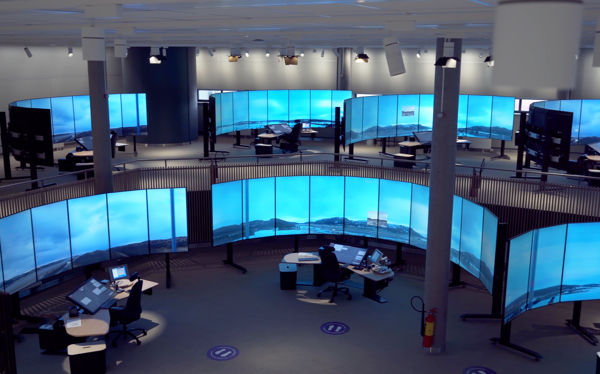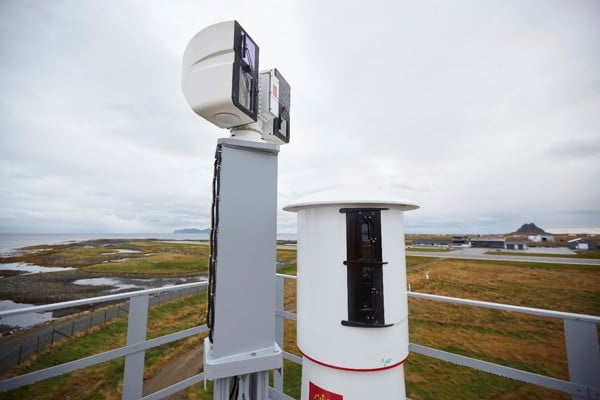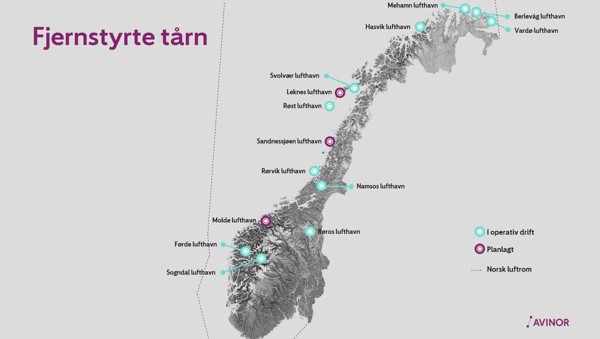Remote-controlled towers

Future Technology at Norwegian Airports
Norway is a country with vast distances and challenging topography. Norwegian industry is internationally oriented and dependent on aviation. Aviation is crucial for settlement, value creation, tourism, healthcare, education, sports, and culture.
Two out of three Norwegians have access to an airport within an hour's travel. In Western Norway and Northern Norway, two out of three can reach the nearest airport within half an hour. Aviation has great significance for regional growth and accessibility to regional centers and plays an important role in Norway's decentralized education system. Aviation is also central to the healthcare sector in Norway: more than 30,000 air ambulance movements are carried out annually. The hospital structure in Northern Norway is based, among other things, on significant air transport. Aviation is also an important sector for tourism, especially in Northern Norway. Remote Towers help support these sectors through a safe, stable, and efficient tower service.

Further Development for Continued Growth
Avinor is implementing a number of measures to modernize and streamline operations and to facilitate continued growth in aviation. Avinor Air Navigation introduced remote tower service at Røst Airport on October 19, 2019, together with suppliers Kongsberg Defence & Aerospace and Indra. Remote towers will initially be rolled out at a total of 15 airports in Norway. In May 2022, the new Remote Towers Centre opened in Bodø, where today there are 14 airports in operational service. This is now the world's largest center for remote towers. In February 2024, Avinor's board decided to transfer six new towers to Avinor's remote tower center in Bodø. It has also been previously decided that the new Mo i Rana airport will be remotely operated from the center in Bodø. Thus, the number of towers managed from the center in Bodø will become 21. At the new Bodø airport and Kirkenes airport, digital towers with local solutions will be established.
The aim of this initiative is to facilitate even better and more efficient operations at the airports. Many of the control towers in Norway are due for renovation or complete replacement. With remote towers, Avinor avoids some of these costs. In the future, one person will also be able to handle traffic at multiple airports from the same position. This also provides significant efficiency opportunities and lower expenses, which in turn ensures the excellent route offerings we have in Norway today.

A Reliable Solution to Trust
Any change in aviation is regulated by strict safety rules. In the development of remote-controlled towers, it has been a prerequisite that the solution should be as safe as, or even safer than, current towers.
Avinor conducts comprehensive safety analyses of any changes in systems and work methods in accordance with internal processes approved by the Civil Aviation Authority. Before remote-controlled towers are implemented, the solutions have been accepted by the Civil Aviation Authority, and it is documented that the safety level is as good as or better than traditional towers.
How Remote-Controlled Towers Work
A remote-controlled tower means that those who manage traffic at the airport are located in a tower center instead of at each individual tower. At the airport, cameras, microphones, and other equipment are installed, providing extremely detailed information about the weather and activities at the airport at all times.
Locations

Timeline for Implementing Remote-Controlled Towers
Phase 1:
- Røst – October 2019 (in operational use)
- Vardø – October 2020 (in operational use)
- Hasvik – November 2020 (in operational use)
- Berlevåg – November 2020 (in operational use)
- Røros – June 2022 (in operational use)
- Mehamn – June 2022 (in operational use)
- Rørvik – September 2022 (in operational use)
- Namsos – September 2022 (in operational use)
- Svolvær – January 2023 (in operational use)
- Sogndal – February 2023 (in operational use)
- Førde – February 2023 (in operational use)
- Molde – April 2025 (in operational use)
- Leknes – April 2025 (in operational use)
- Sandnessjøen – April 2025 (in operational use)
Phase 2:
Order not determined.
- Båtsfjord - during 2026/2027
- Mosjøen - during 2026/2027
- Sandane - during 2026/2027
- Sørkjosen - during 2026/2027
- Vadsø - during 2026/2027
- Ørsta-Volda - during 2026/2027
- New airport Mo i Rana - planned completion spring 2027
- New airport Bodø - planned completion 2029/2030